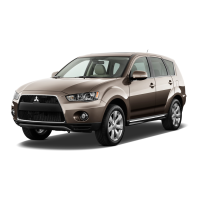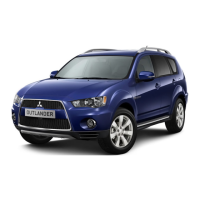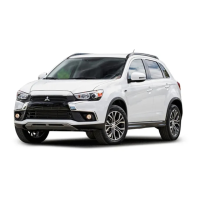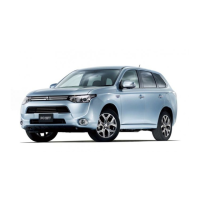WARNING
l
Never move the gearshift lever to the “N”
(NEUTRAL) position while driving. A se-
rious accident could occur since you
could accidentally move the lever into the
“P” (PARK) or “R” (REVERSE) position
or you will lose engine braking.
l
On a gradient the engine should be star-
ted in the “P” (PARK) position. Although
the engine can be started when the vehi-
cle is in the “N” (NEUTRAL) position if
the brake pedal is depressed, for safety
reasons, do not start the engine in the
“N” (NEUTRAL) position.
l
Always keep your right foot on the brake
pedal when shifting into or out of “N”
(NEUTRAL), to minimize the risk of loss
of control.
“D” DRIVE
This position is for normal driving. The transmis-
sion automatically selects a suitable gear ratio for
your speed and acceleration.
Engine braking is automatically applied when nec-
essary, depending on road conditions.
CAUTION
l
Never shift into the “D” (DRIVE) posi-
tion from the “R” (REVERSE) position
while the vehicle is in motion to avoid
transmission damage.
NOTE
l
When the engine is cold, upshifts occur at a
higher vehicle speed than when the engine is
warm.
This control is performed to quickly warm
up the engine. It does not indicate a malfunc-
tion. After the vehicle has been driven for a
while, upshifts will occur at the regular en-
gine speeds.
Twin Clutch SST control mode
E00621300175
Select the control mode from the following two
types to suit the driving conditions.
Twin
Clutch SST
control
mode
Characteristic
NORMAL
(Control
mode when
engine is
started)
Control mode for normal driving on
local roads, expressways, and the
like.
Smooth shifting is performed at low
engine speeds for economical driv-
ing with good ride quality.
SPORT
Control mode for driving on moun-
tain roads, roads with uphill and
downhill slopes, and expressways
with long downhill slopes where en-
gine braking is necessary.
Compared to “NORMAL” mode,
shifting occurs at higher engine
speeds and is quicker.
In addition, quick downshifting is
possible when the accelerator pedal
is depressed for quick acceleration
or when the brakes are applied.
NOTE
l
When continuously driving on closed circuit
tracks or at other locations where the engine
is operated at high speeds and under a heavy
load, the Twin Clutch SST fluid temperature
will have a tendency to rise.
In this case, if the temperature rises too high,
the warning display will appear on the in-
formation screen in the multi-information dis-
play to alert the driver.
If the warning display appears, be sure to
refer to “Warning display” on page 4-43
and follow the appropriate measures.
l
The Twin Clutch SST control mode can be se-
lected both when “D” range operation is se-
lected and when manual shifting is selected.
l
If you select “SPORT” mode while the en-
gine is cold, the transmission may shift up at
different speeds compared to that when the
engine is warm.
This is simply the operation of the control sys-
tem to warm the engine quickly. It does not
indicate a malfunction.
l
For slippery road surfaces, such as roads
with accumulated snow, “NORMAL” mode
is recommended for smooth shifting at low
engine speeds.
Starting and driving
4-39
4

